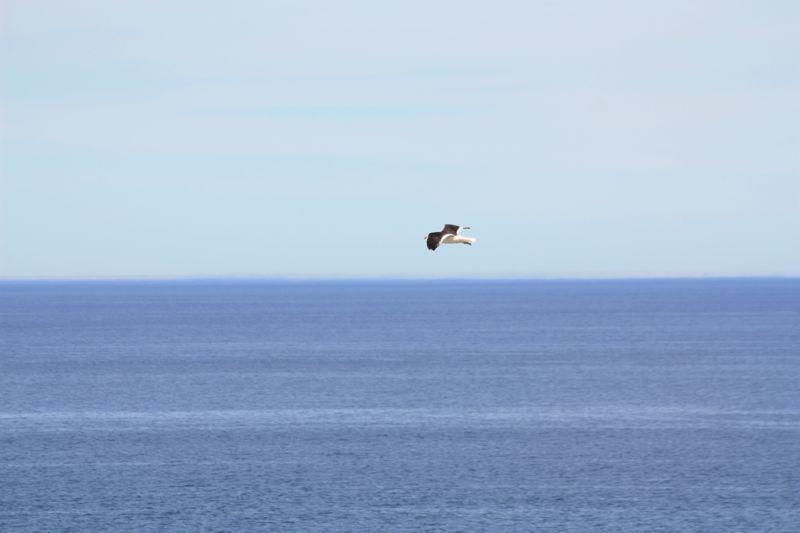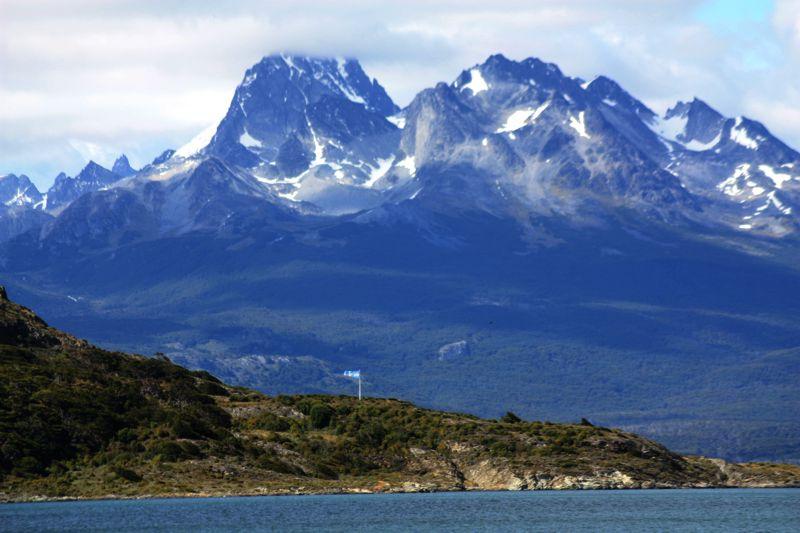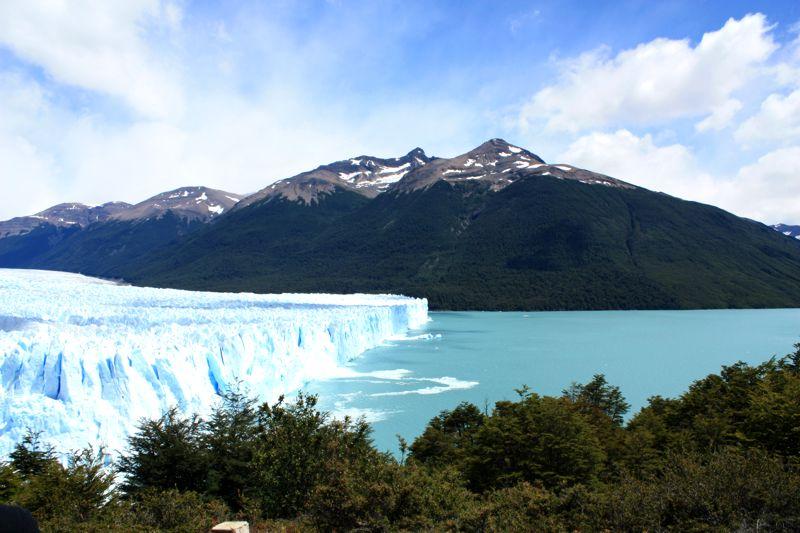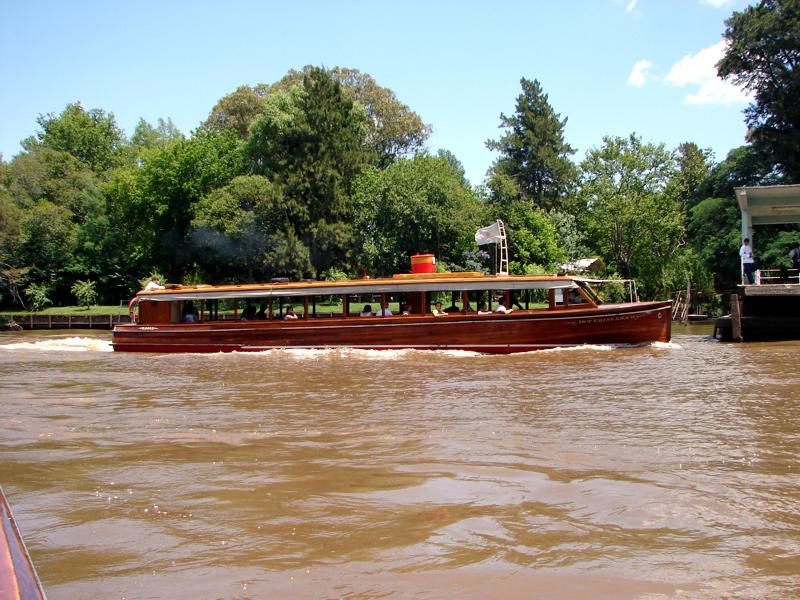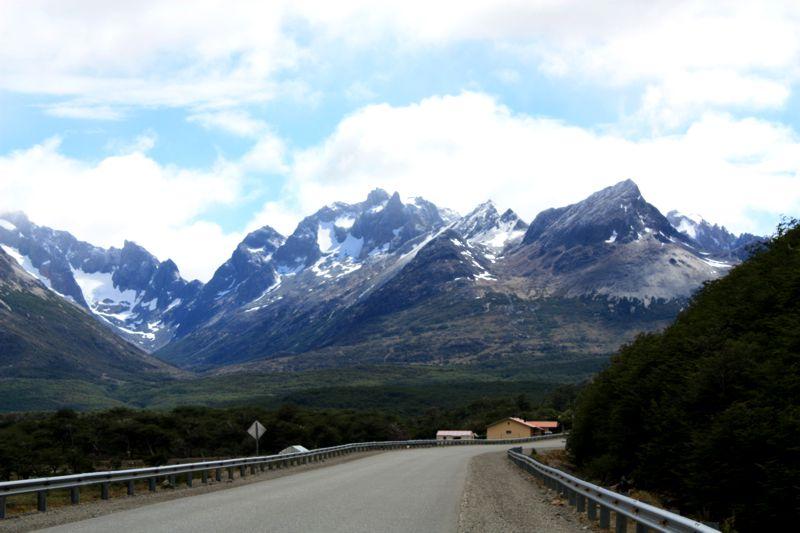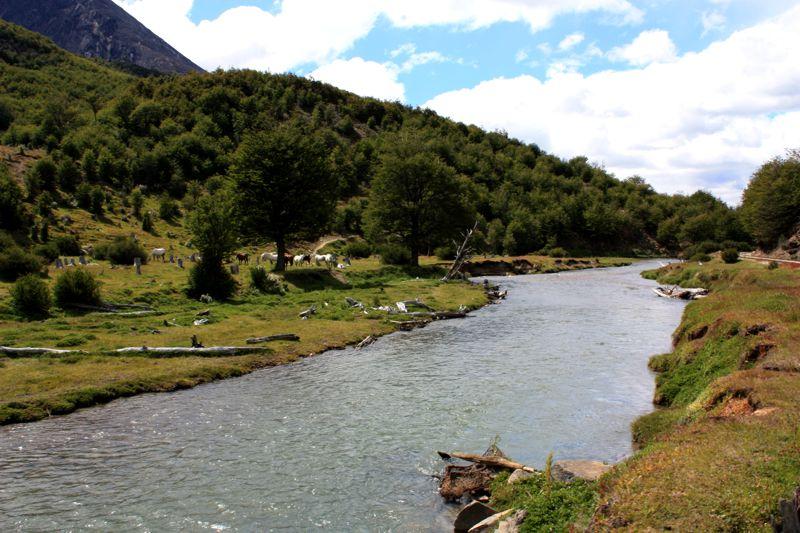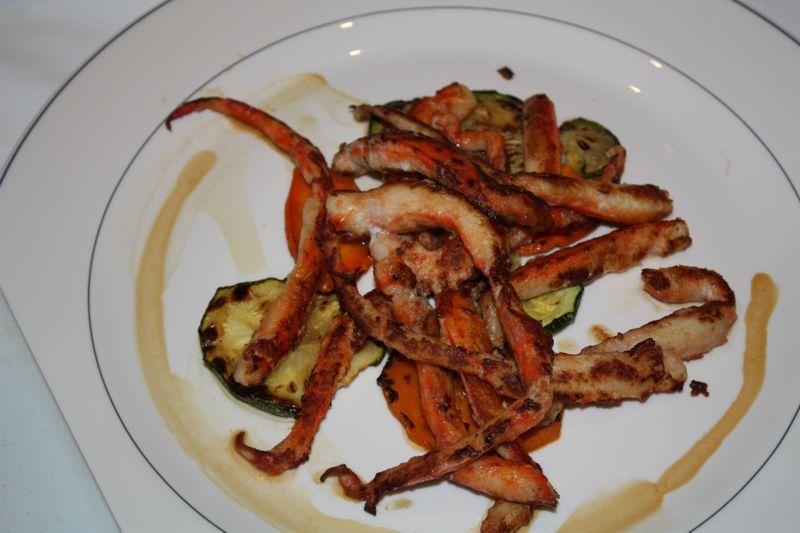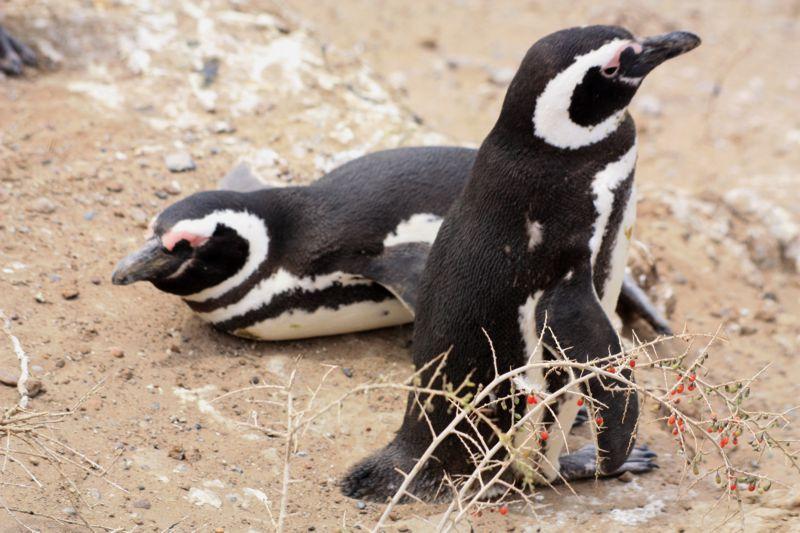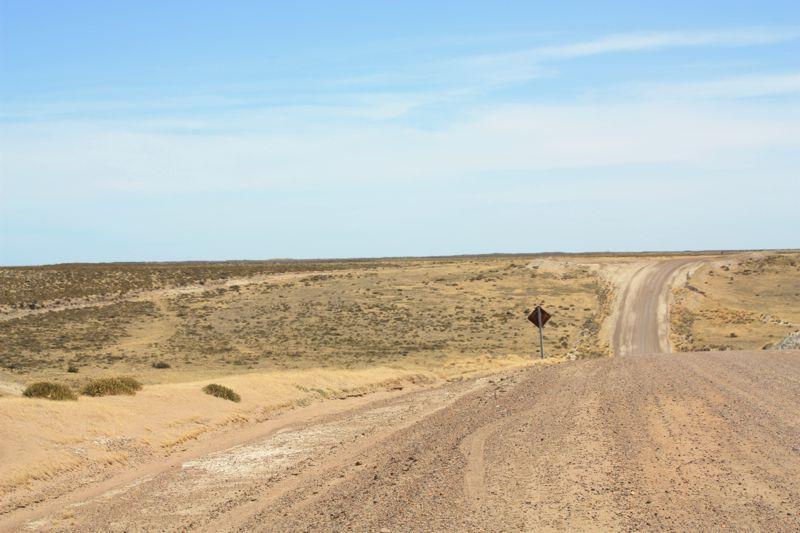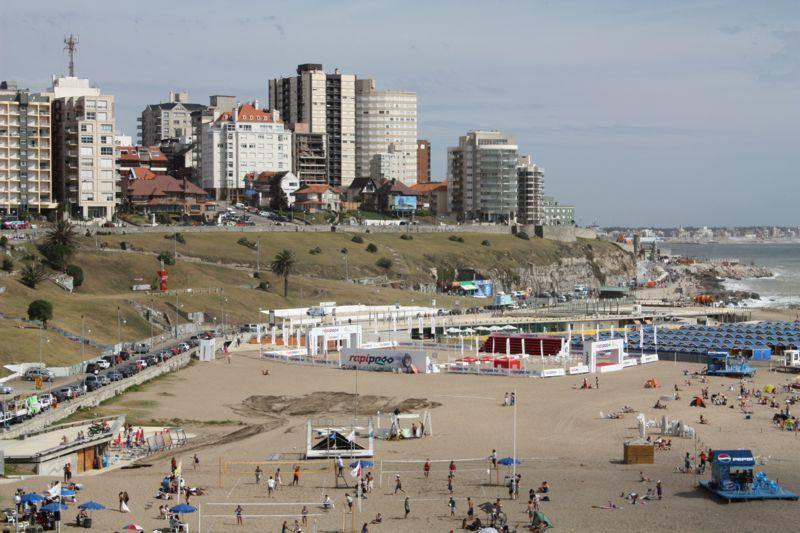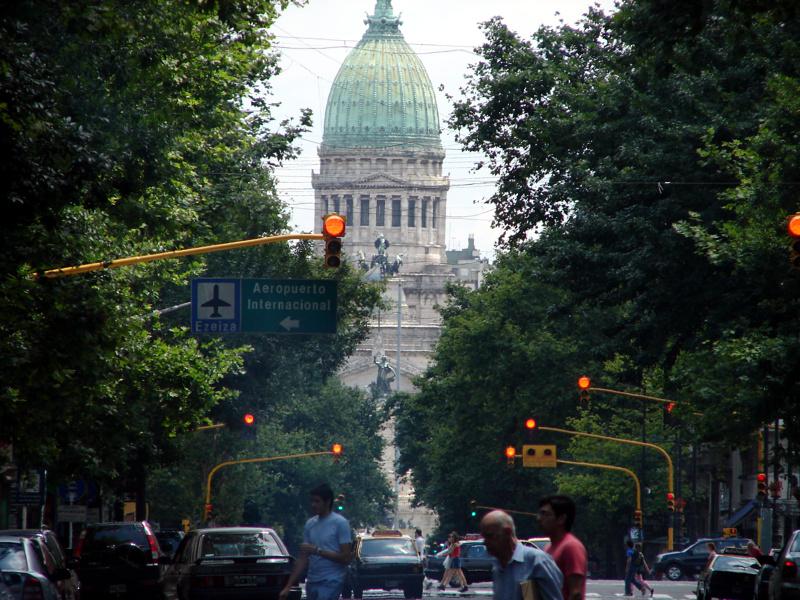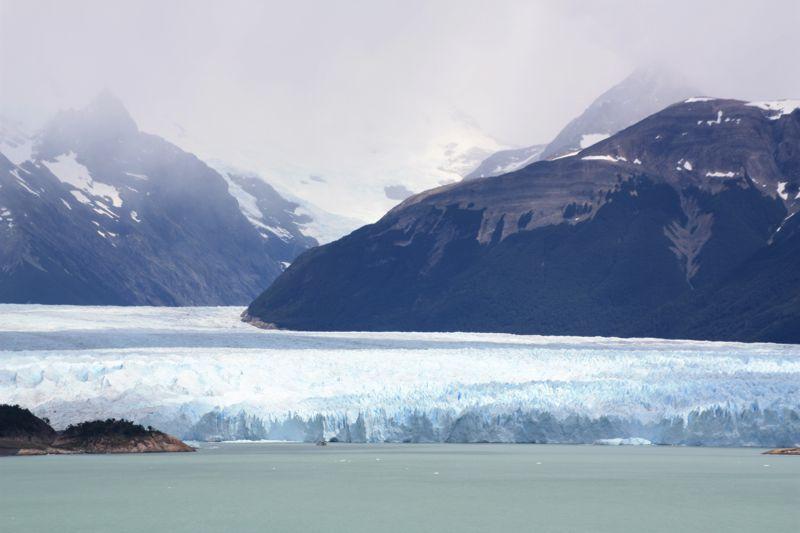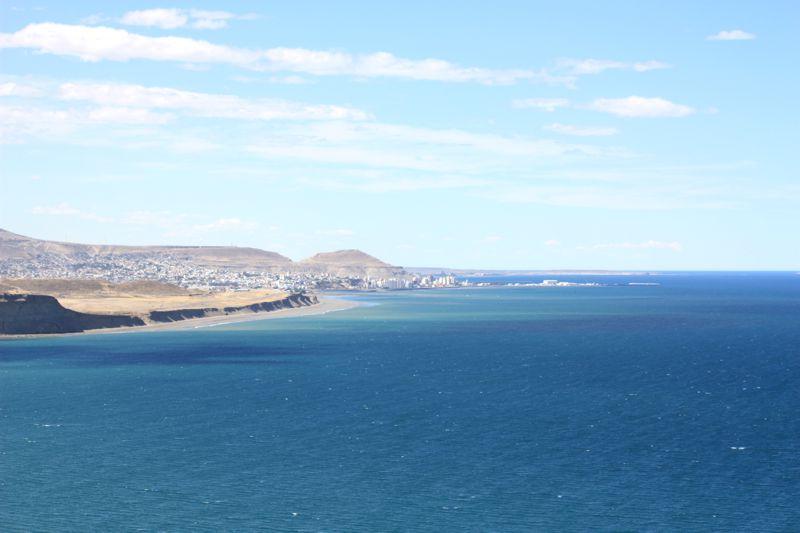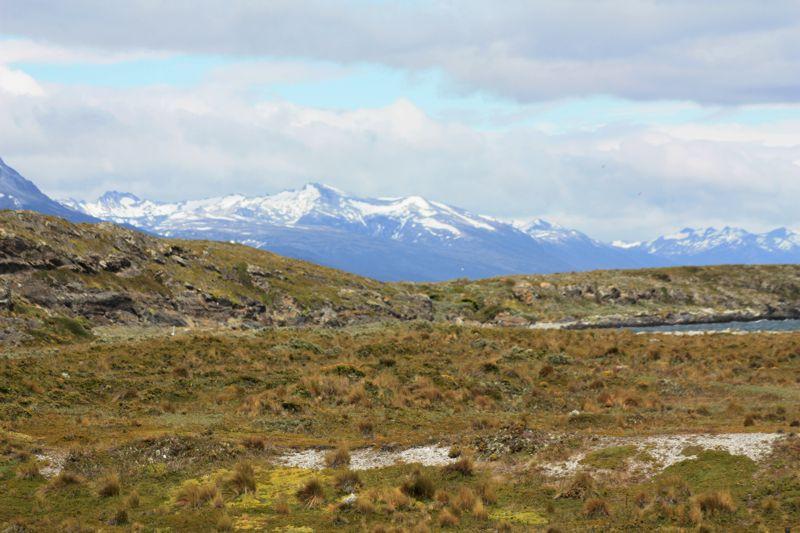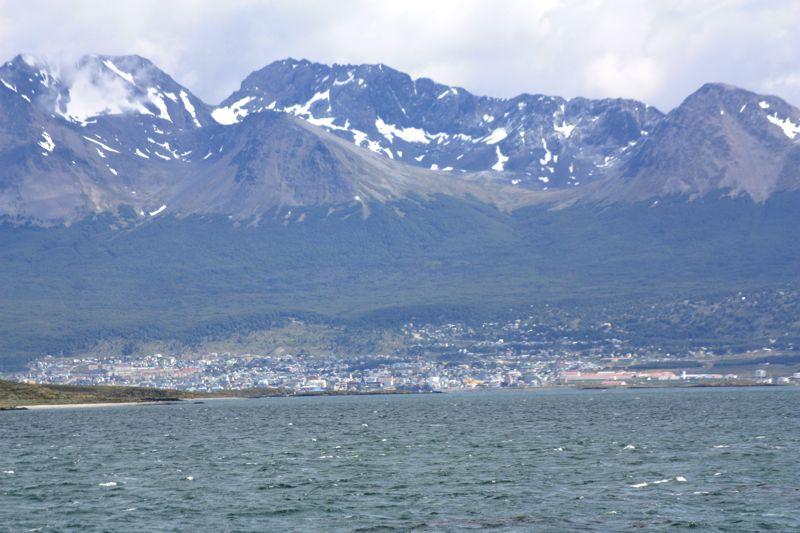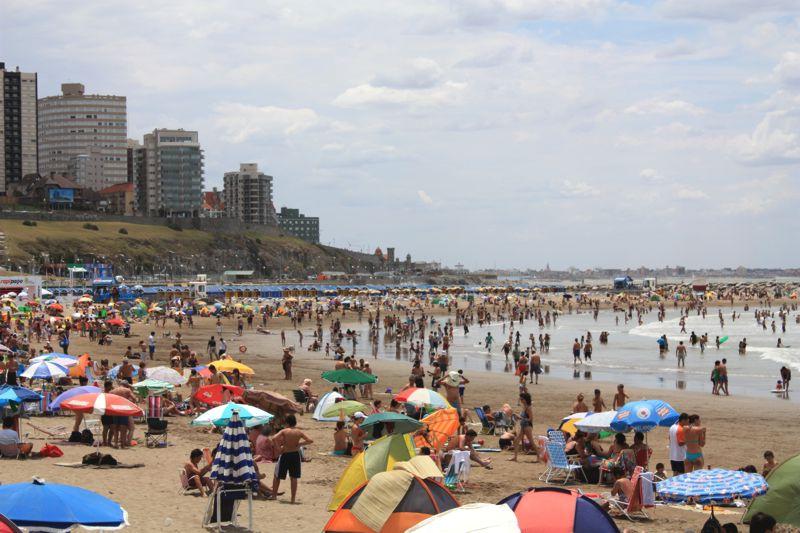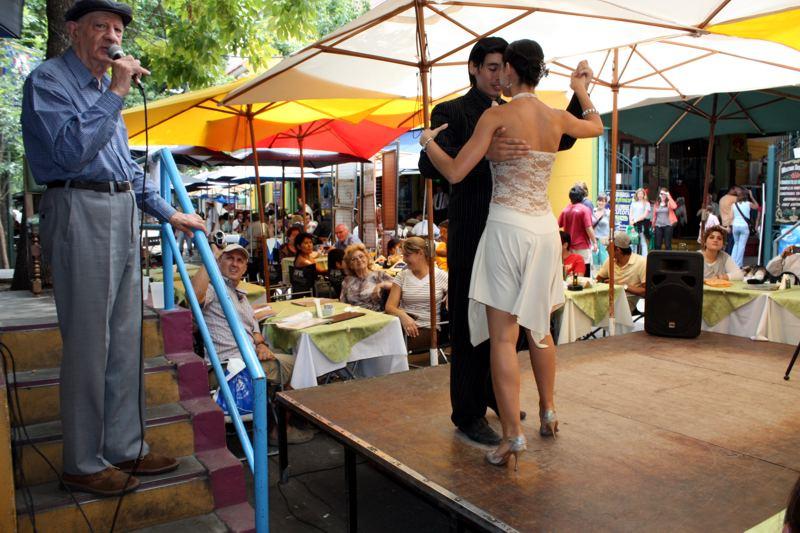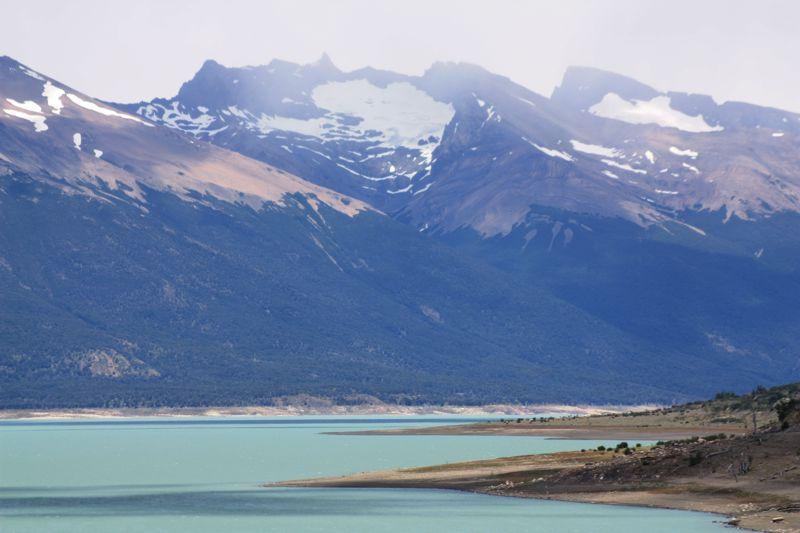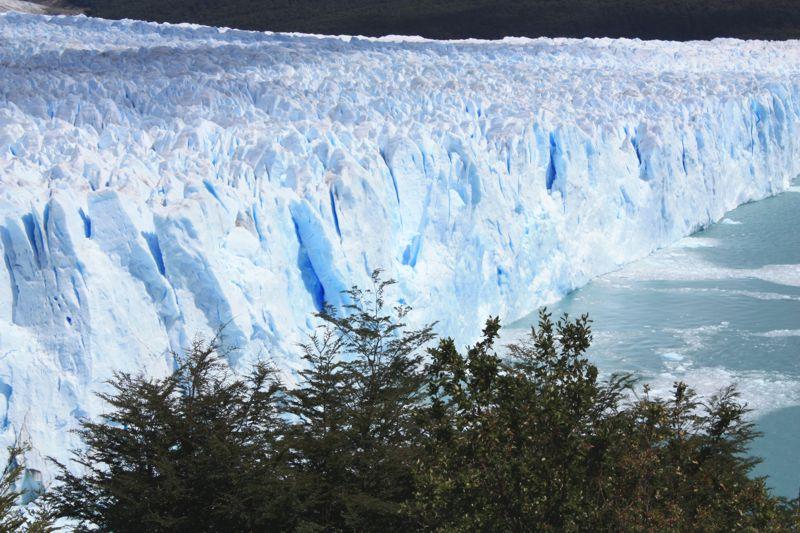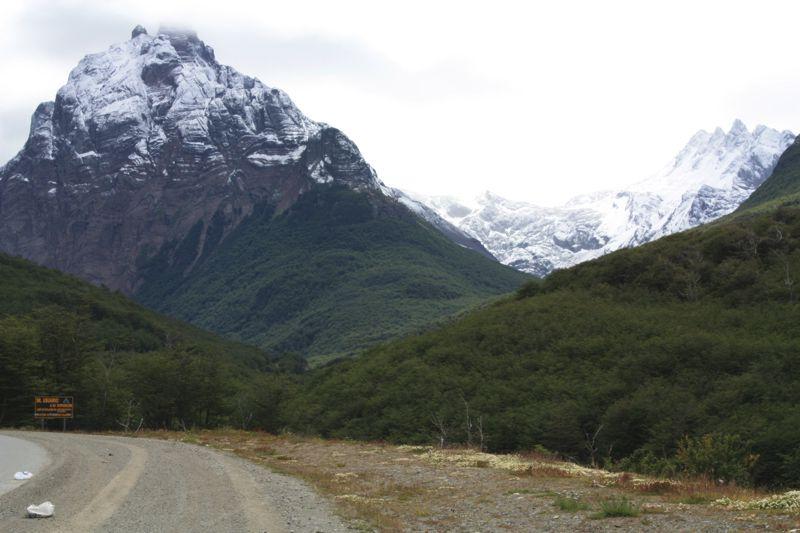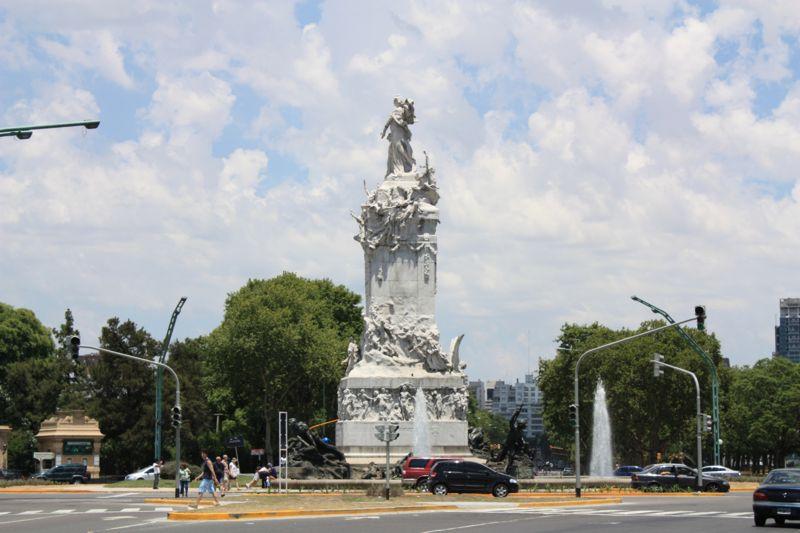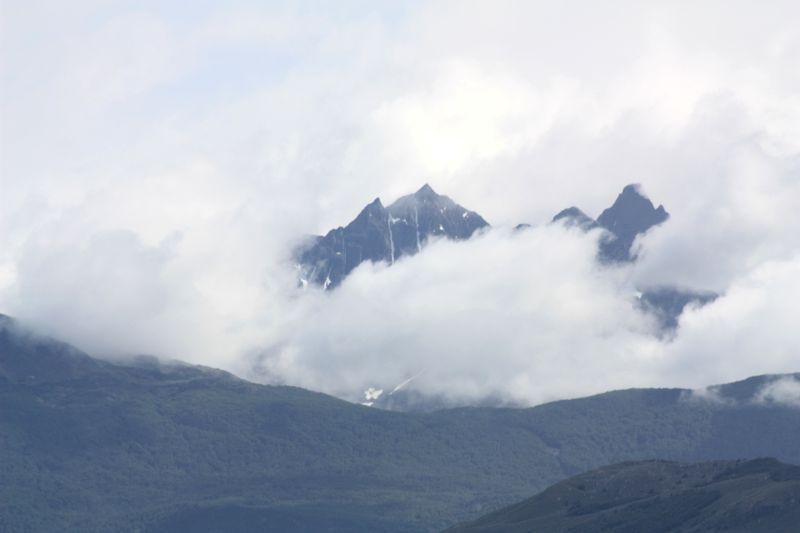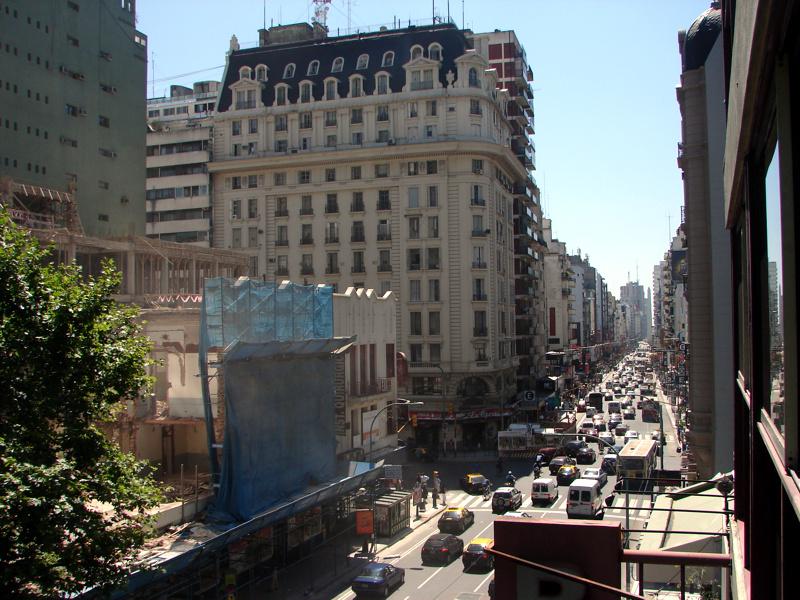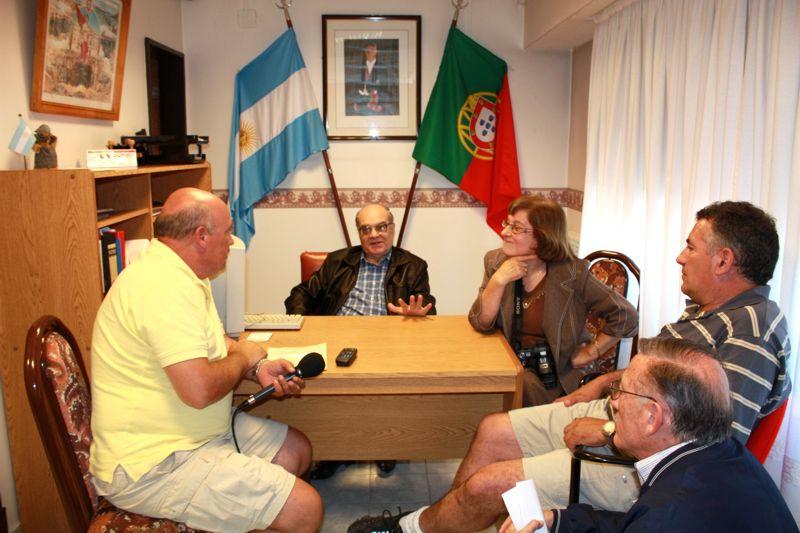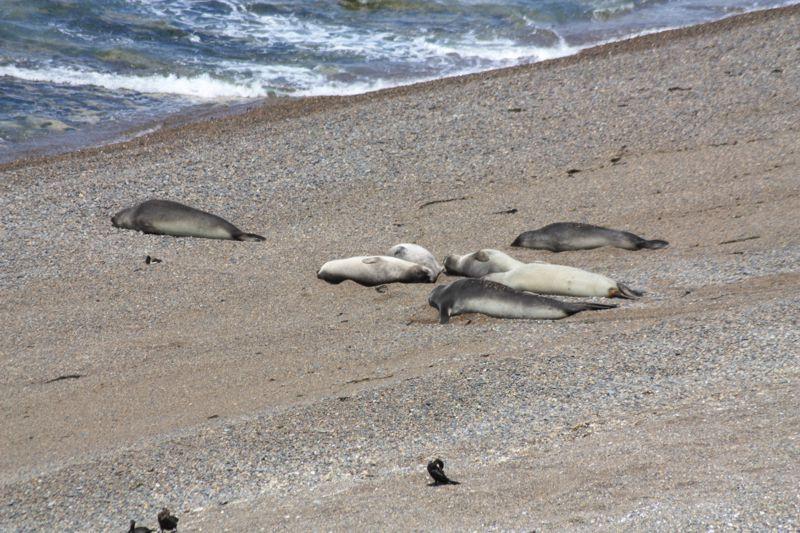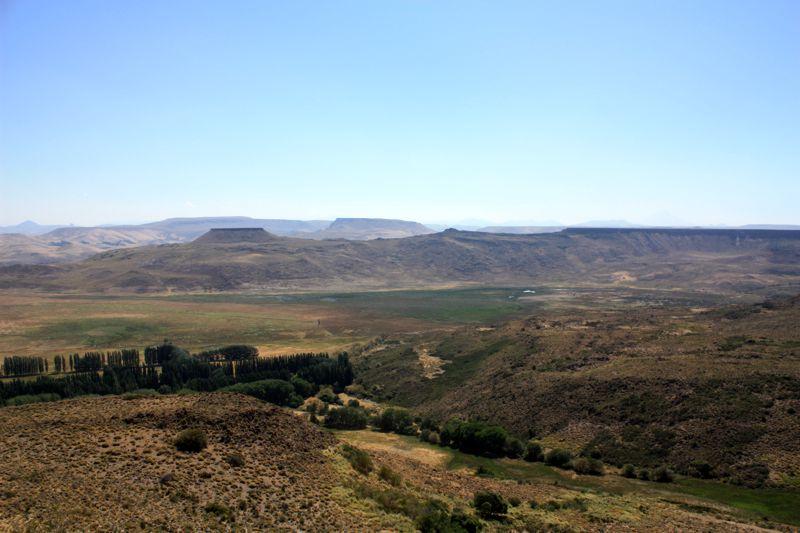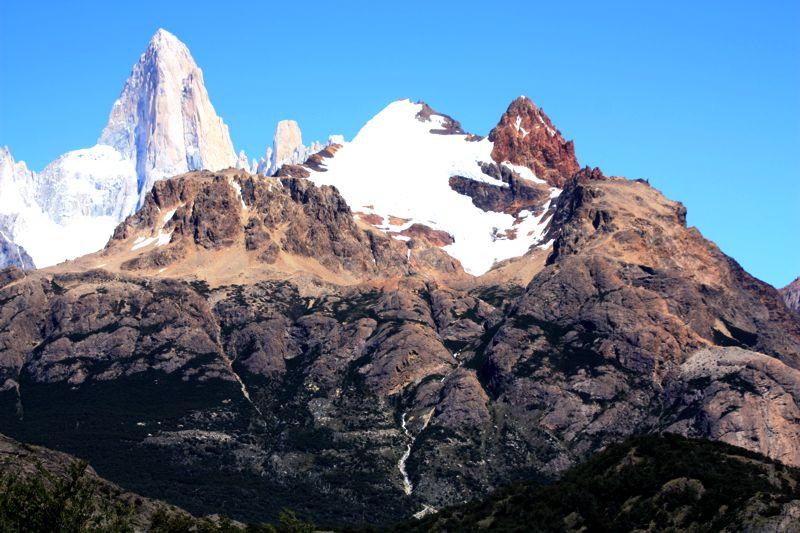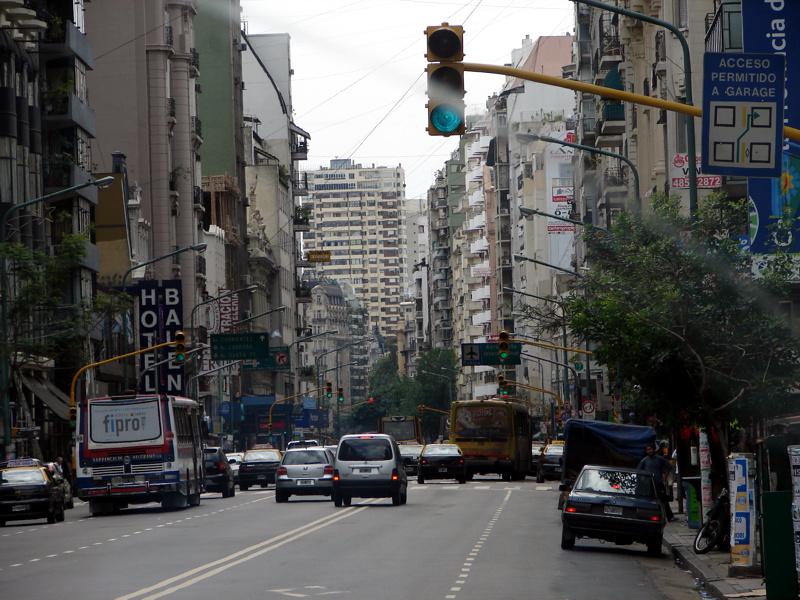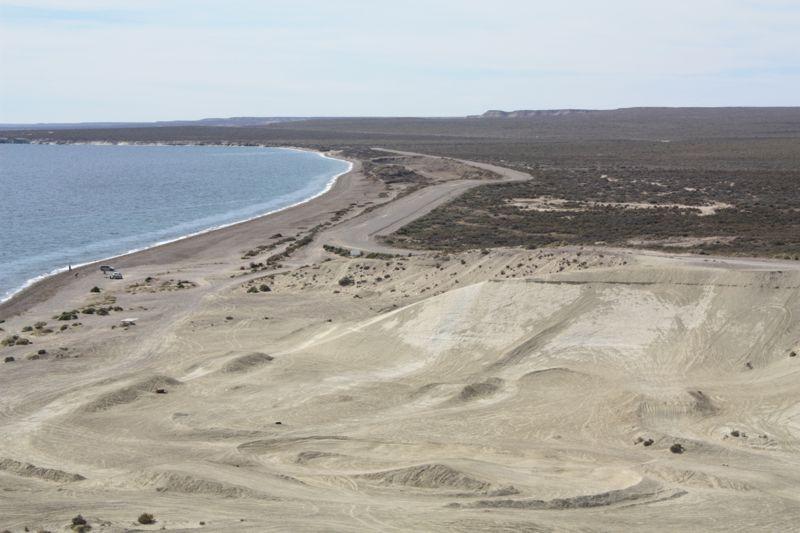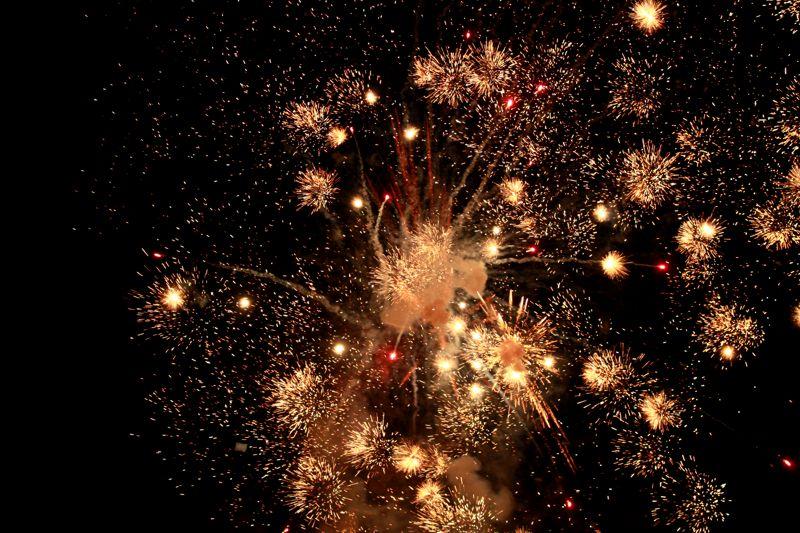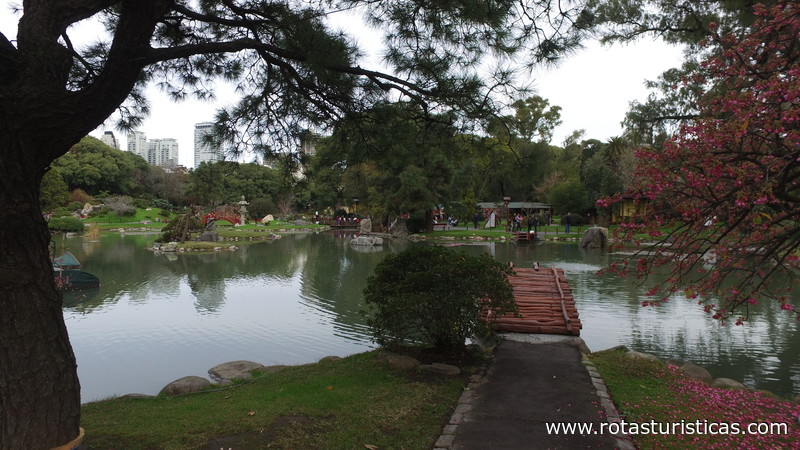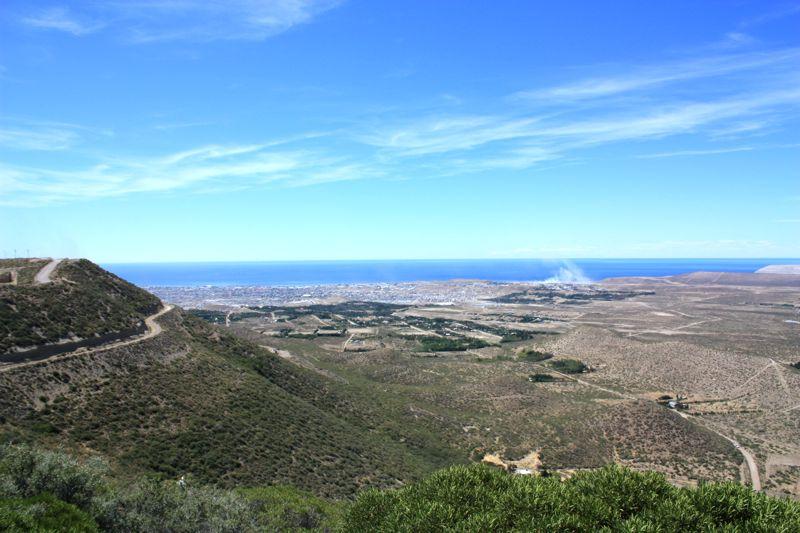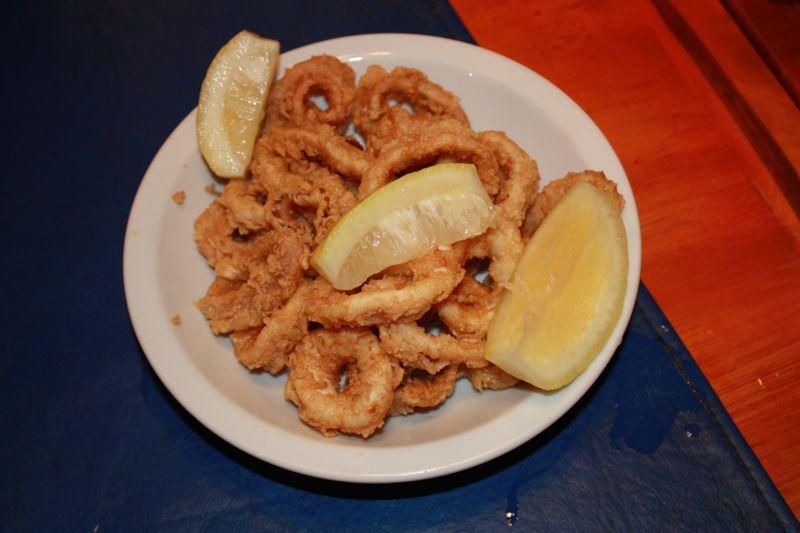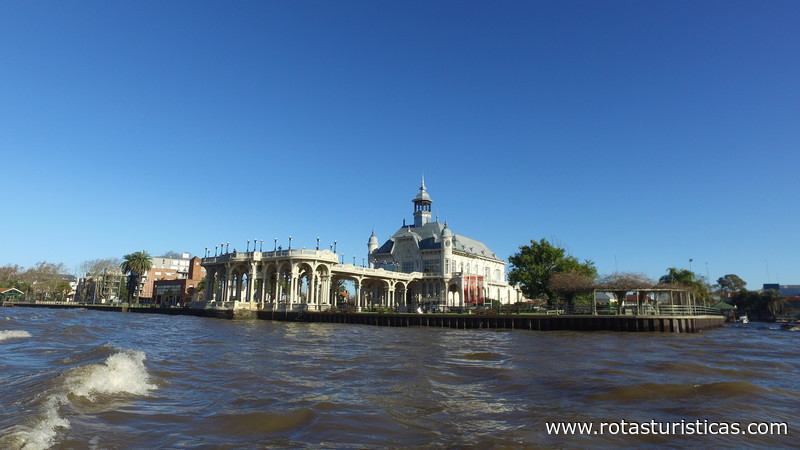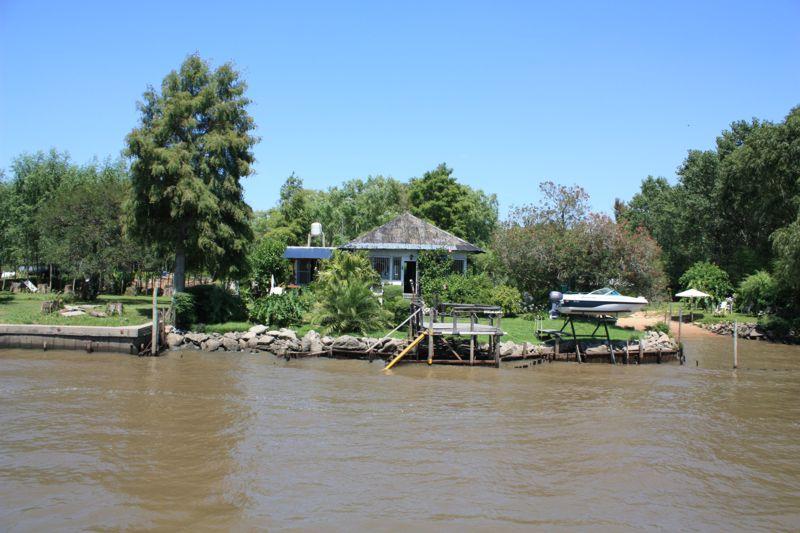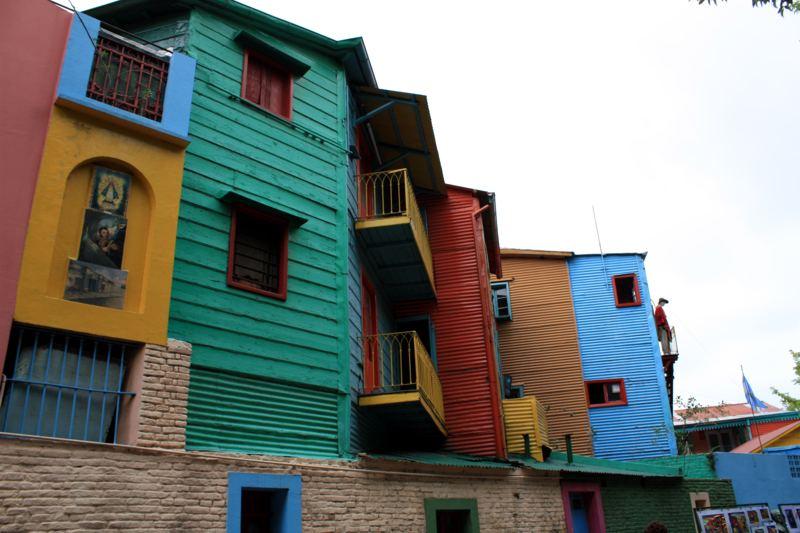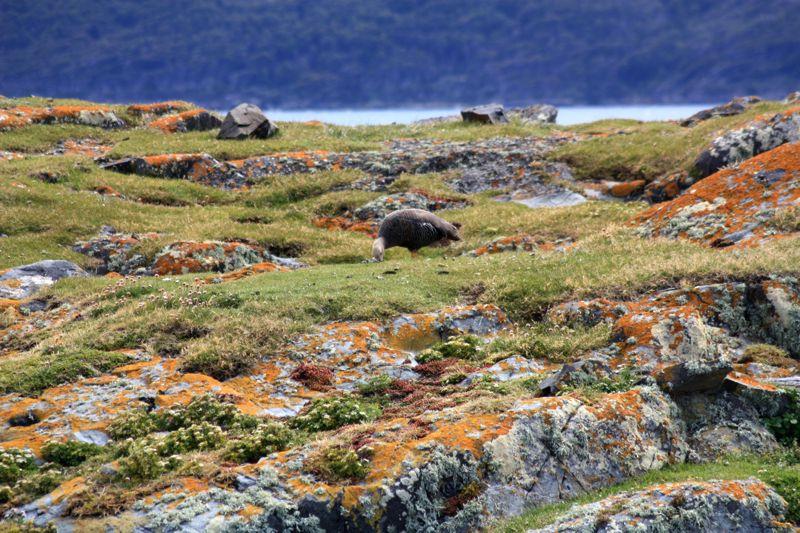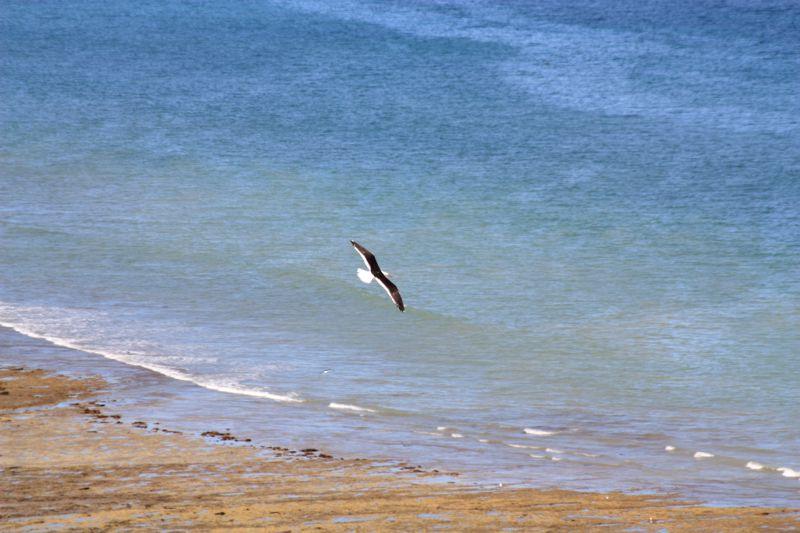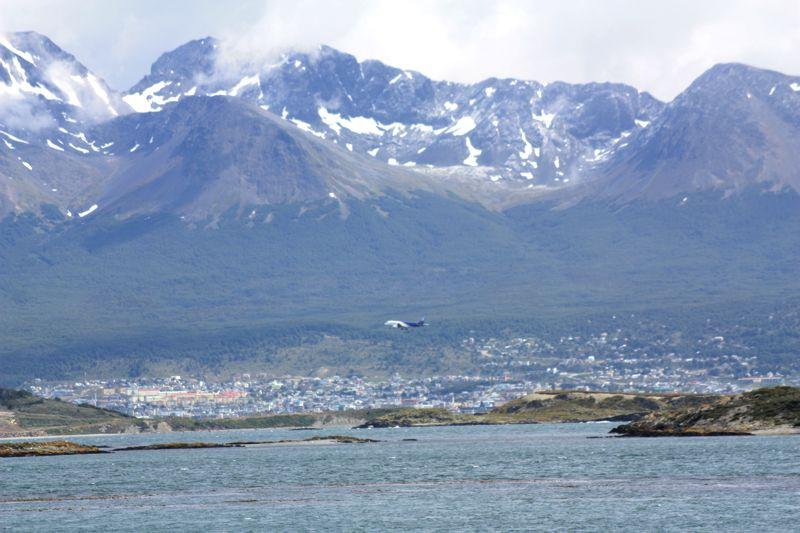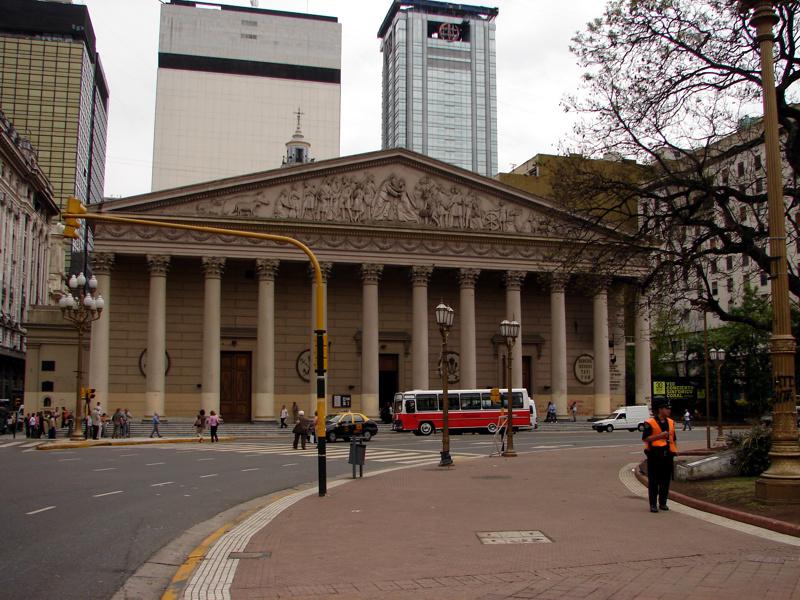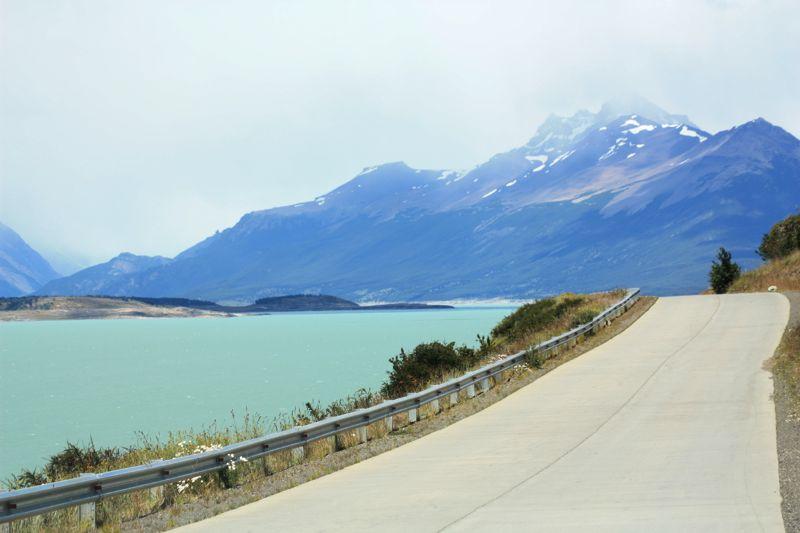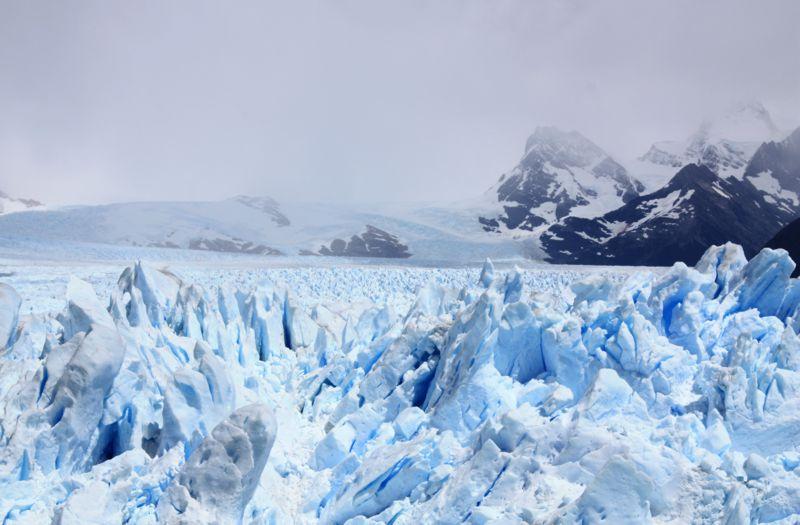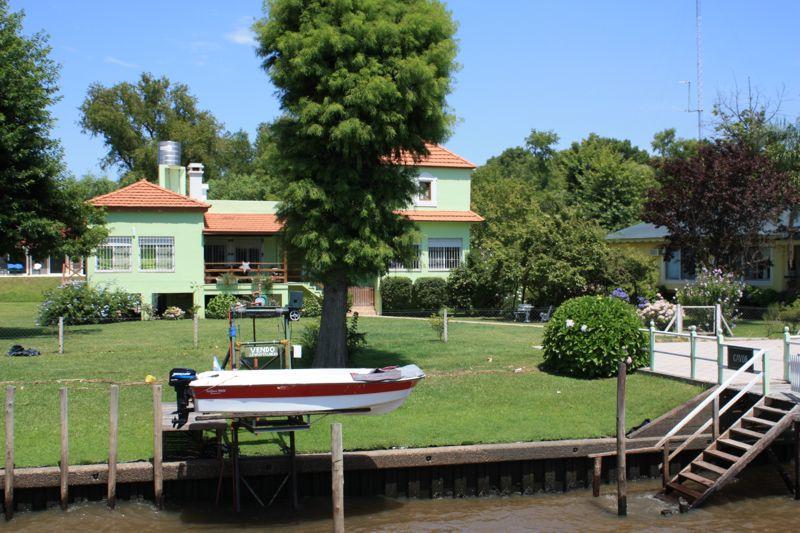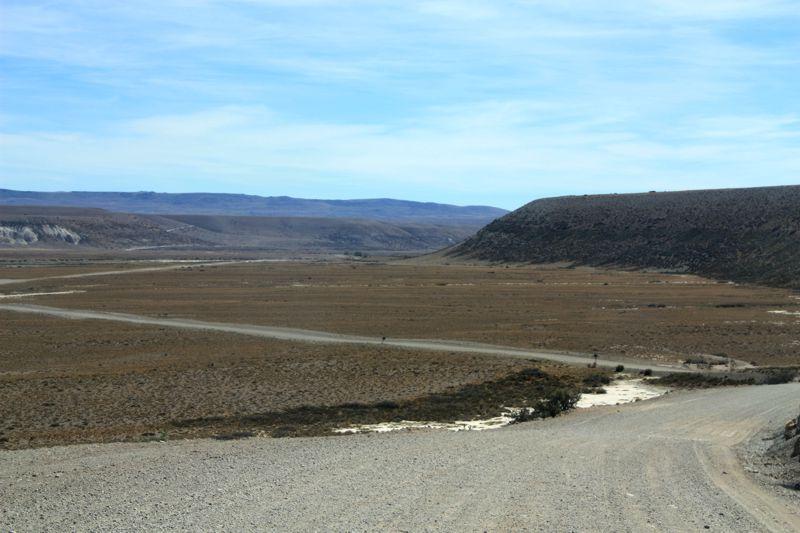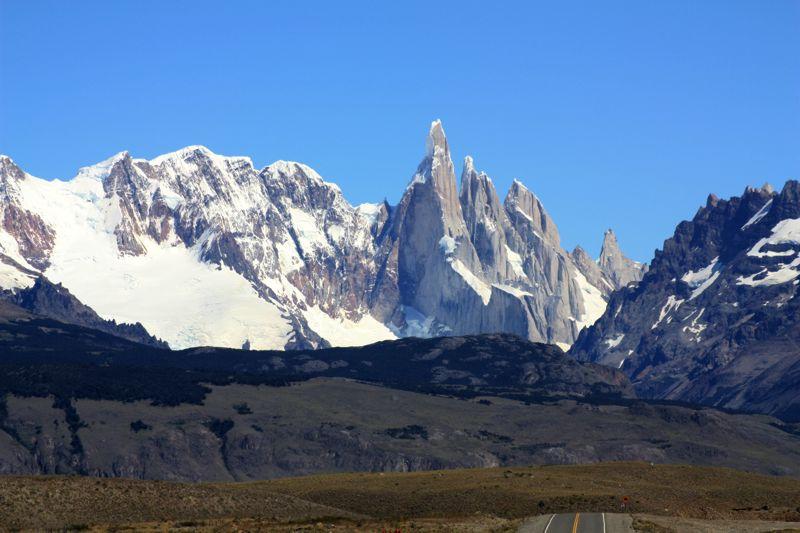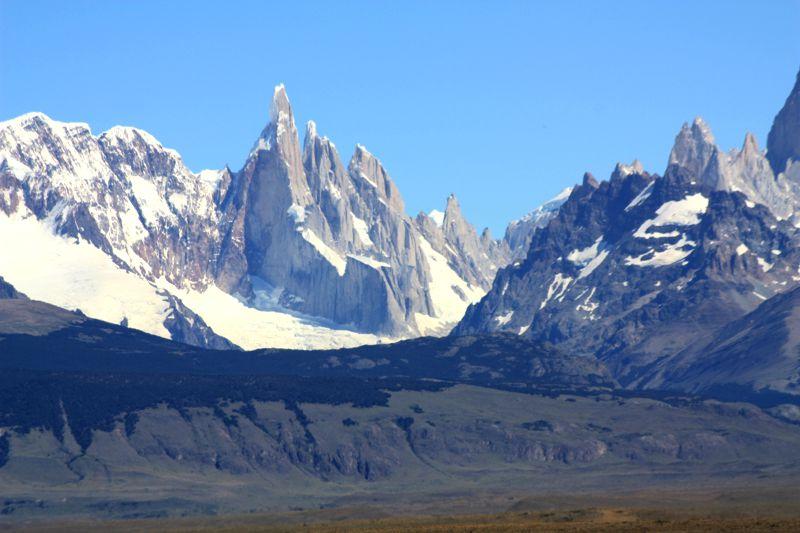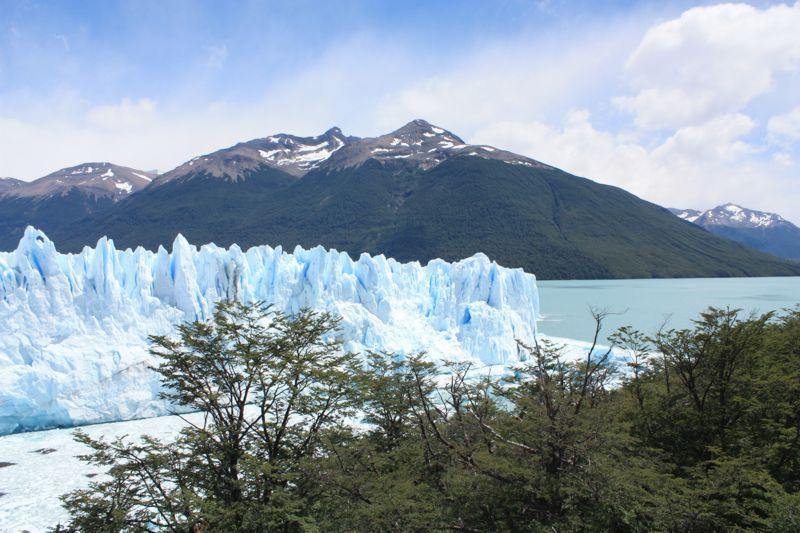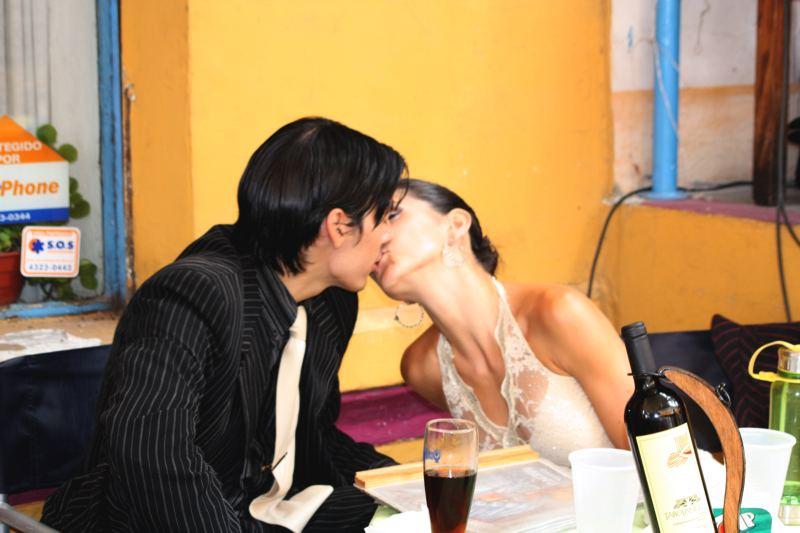Pictures of: Argentina
Location map
Airports
Hotels and other Accommodation
Golf Courses
What to visit
Where to Eat
Where to have fun
Consulates & Embassies
World Nomads
The Travel Insurance with the largest coverage

The Travel Insurance with the largest coverage

Argentina
Argentina, officially the Republic of Argentina, is the second largest country in South America, and the third in population, constituted as a federation of 23 provinces and an autonomous city, its capital, Buenos Aires.
It is the eighth largest country in the world in territorial area and the largest among Spanish-speaking nations, although Mexico, Colombia and Spain, which have smaller territory, are more populous.
Argentina is located in the southern cone of South America and its length extends from 22 ° to 55 ° latitude. It borders Uruguay, Brazil, Paraguay, Bolivia and Chile with a perimeter of 9,376 kilometers, and its seafront, on the Atlantic Ocean, reaches 5,117 kilometers.
The name of Argentina comes from the Latin "argentum", which means silver. The origin of this denomination is located in the trips of the first Spanish conquerors to the River of the Silver.
The shipwrecked people of the expedition of Juan Diaz de Solís found in the region, natives who gave them as silver presents, and these shipwrecks brought to Spain, about 1524, the news of the existence of the legendary Sierra del Plata, a mountain rich in that metal precious. From this date the Portuguese called the River Sólis, Rio de La Plata. Two years later, the Spaniards also used this denomination.
The first flag of Argentina was created by General Don Manuel Belgrano in 1770, and was hoisted in the city of Rosario. It is composed of three horizontal bands: one central, white, with the rising sun, and two lateral, blue sky.
After a period of intense internal upheaval in 1813, a Constituent General Assembly met - starting point for the emancipatory process, which would be militarily supported by the victorious campaigns of San Martín ...
On 09/07/1816, the Congress of Tucumán formally proclaimed the Independence of the United Provinces of the Río de La Plata - founding of the Argentine Republic. Since 1860, the name República Argentina is the official denomination of the country.
It is the eighth largest country in the world in territorial area and the largest among Spanish-speaking nations, although Mexico, Colombia and Spain, which have smaller territory, are more populous.
Argentina is located in the southern cone of South America and its length extends from 22 ° to 55 ° latitude. It borders Uruguay, Brazil, Paraguay, Bolivia and Chile with a perimeter of 9,376 kilometers, and its seafront, on the Atlantic Ocean, reaches 5,117 kilometers.
The name of Argentina comes from the Latin "argentum", which means silver. The origin of this denomination is located in the trips of the first Spanish conquerors to the River of the Silver.
The shipwrecked people of the expedition of Juan Diaz de Solís found in the region, natives who gave them as silver presents, and these shipwrecks brought to Spain, about 1524, the news of the existence of the legendary Sierra del Plata, a mountain rich in that metal precious. From this date the Portuguese called the River Sólis, Rio de La Plata. Two years later, the Spaniards also used this denomination.
The first flag of Argentina was created by General Don Manuel Belgrano in 1770, and was hoisted in the city of Rosario. It is composed of three horizontal bands: one central, white, with the rising sun, and two lateral, blue sky.
After a period of intense internal upheaval in 1813, a Constituent General Assembly met - starting point for the emancipatory process, which would be militarily supported by the victorious campaigns of San Martín ...
On 09/07/1816, the Congress of Tucumán formally proclaimed the Independence of the United Provinces of the Río de La Plata - founding of the Argentine Republic. Since 1860, the name República Argentina is the official denomination of the country.
Country features and curiosities
Plains of the Pampas (center-west), Mesopotamia (NE) and Chaco (N), separated by a plateau; Andes mountain range (O); plateaus with depressions (SE).
It has a territorial extension that covers almost 3.8 million km², of which 2.8 remain on the continent and the rest in the Antarctic sector. From the Tropic of Capricorn to the Antarctic Circle extends an impressive natural monument, with almost 3.8 million square kilometers.
The fundamental feature of the Argentine relief is the enormous contrast offered by the immense eastern plains and the impressive Andes Cordillera to the west, which borders Chile and boasts the culmination of the American continent: the Aconcagua.
In its route from Jujuy to Tierra del Fuego, the Cordillera presents remarkable contrasts in its landscape, which includes the plateaus of the northwest, the region of the lakes, the forests and glaciers of the Patagonian Andes. It is the country with the greatest geographic and climatic variety in South America.
To the north, El Chaco is a forest area linked to the rivers Bermejo, Salado and Pilcomayo.
Between the Paraná and Uruguay rivers, Mesopotamia Argentina (provinces of Entre Ríos, Corrientes and Misiones) is formed by low hills with lagoons and "estuary" estuaries that show the ancient routes of these great rivers. In some occasions they produce ruptures that favor phenomena as spectacular as the incomparable Iguazú Falls.
In central Argentina, La Pampa is the most extensive and well-known plain. With an intensive farm and cattle ranching, it covers the provinces of Buenos Aires, La Pampa, southern Santa Fe and the Cordoba region. Its landscape is interrupted to the south by the small mountain ranges of Tandil and La Ventana, and to the west by the hills of Cordova.
In the south direction, from the Andes to the sea, the barren and stony Patagonian plateaus are extended, punished most of the year by the wind. The Atlantic coastline, embroidered with high cliffs, draws great sinuosities, such as the Peninsula Valdes, with its spectacular and unique colonies of marine animals.
Also called "country of the six continents", it is a gift of nature, because in Argentina, there are tropical forests, waterfalls, forests, lakes, glaciers with their eternal ice, volcanoes, mountains, and almost infinite plateaus.
Across the Atlantic coast and especially on the Peninsula Valdes, in Patagonia, is one of the most important reserves of marine fauna in the world.
Each year hundreds of whales reach the tranquil waters of the peninsula to fulfill their life cycle, and on the coast, more than one million penguins and colonies of elephant seals are privileged viewers of this explosion of marine fauna.
They are also captivating, their cities. Nobody leaves indifferent a walk through the neighborhoods of Buenos Aires, the Federal Capital, which is also an economic and cultural reference of South America.
And so are his stories ...
It was in the 1920s that peasant Juana Duarte, from the confines of a village in the Pampas, had one of her five illegitimate children. The girl was called Eva, and fifteen years later she would pack her suitcase to try her luck at some cabaret in the capital. It ended up being given its name to a street and much more ...
Evita went hungry and went through influential beds until she reached the age of 25, in the arms of the coveted colonel Juan Domingo Perón and became, in 1946, the first lady of the country at that most aristocratic height in Latin America. His captivating figure and the very particular way of exercising power eventually overtook Perón's popularism and became a power apart.
In the next six years of his short life, he left deep marks in the country. Eva Perón (1919-1952) became the queen of the descamisados, the hope of the Argentine people, knowing in the right measure, to impose themselves against the aristocracy and give security to the workers. The Eva Perón Foundation gave everything from warm clothes to homes to the needy. And whoever collaborated with this generosity, not always voluntarily, was the business class.
Added to this is the fact that Argentina is living glory days with devastated Europe in the post-war period, it is easy to understand why Evita has reached the dimension of myth that, like Gardel himself, still hovers over the Argentines.
Evita's body, or only "El Coráver", was worked by the Spanish mummifier Pedro Ara, and has become the most traveled in history.
With the military coup that took Peron out of power in 1955, the coffin was kidnapped by the military and went from hiding to hiding, went to Milan, then Spain, and finally the body returned to Argentina, where it is now, in the family tomb Duarte, in the Recoleta Cemetery.
It has a territorial extension that covers almost 3.8 million km², of which 2.8 remain on the continent and the rest in the Antarctic sector. From the Tropic of Capricorn to the Antarctic Circle extends an impressive natural monument, with almost 3.8 million square kilometers.
The fundamental feature of the Argentine relief is the enormous contrast offered by the immense eastern plains and the impressive Andes Cordillera to the west, which borders Chile and boasts the culmination of the American continent: the Aconcagua.
In its route from Jujuy to Tierra del Fuego, the Cordillera presents remarkable contrasts in its landscape, which includes the plateaus of the northwest, the region of the lakes, the forests and glaciers of the Patagonian Andes. It is the country with the greatest geographic and climatic variety in South America.
To the north, El Chaco is a forest area linked to the rivers Bermejo, Salado and Pilcomayo.
Between the Paraná and Uruguay rivers, Mesopotamia Argentina (provinces of Entre Ríos, Corrientes and Misiones) is formed by low hills with lagoons and "estuary" estuaries that show the ancient routes of these great rivers. In some occasions they produce ruptures that favor phenomena as spectacular as the incomparable Iguazú Falls.
In central Argentina, La Pampa is the most extensive and well-known plain. With an intensive farm and cattle ranching, it covers the provinces of Buenos Aires, La Pampa, southern Santa Fe and the Cordoba region. Its landscape is interrupted to the south by the small mountain ranges of Tandil and La Ventana, and to the west by the hills of Cordova.
In the south direction, from the Andes to the sea, the barren and stony Patagonian plateaus are extended, punished most of the year by the wind. The Atlantic coastline, embroidered with high cliffs, draws great sinuosities, such as the Peninsula Valdes, with its spectacular and unique colonies of marine animals.
Also called "country of the six continents", it is a gift of nature, because in Argentina, there are tropical forests, waterfalls, forests, lakes, glaciers with their eternal ice, volcanoes, mountains, and almost infinite plateaus.
Across the Atlantic coast and especially on the Peninsula Valdes, in Patagonia, is one of the most important reserves of marine fauna in the world.
Each year hundreds of whales reach the tranquil waters of the peninsula to fulfill their life cycle, and on the coast, more than one million penguins and colonies of elephant seals are privileged viewers of this explosion of marine fauna.
They are also captivating, their cities. Nobody leaves indifferent a walk through the neighborhoods of Buenos Aires, the Federal Capital, which is also an economic and cultural reference of South America.
And so are his stories ...
It was in the 1920s that peasant Juana Duarte, from the confines of a village in the Pampas, had one of her five illegitimate children. The girl was called Eva, and fifteen years later she would pack her suitcase to try her luck at some cabaret in the capital. It ended up being given its name to a street and much more ...
Evita went hungry and went through influential beds until she reached the age of 25, in the arms of the coveted colonel Juan Domingo Perón and became, in 1946, the first lady of the country at that most aristocratic height in Latin America. His captivating figure and the very particular way of exercising power eventually overtook Perón's popularism and became a power apart.
In the next six years of his short life, he left deep marks in the country. Eva Perón (1919-1952) became the queen of the descamisados, the hope of the Argentine people, knowing in the right measure, to impose themselves against the aristocracy and give security to the workers. The Eva Perón Foundation gave everything from warm clothes to homes to the needy. And whoever collaborated with this generosity, not always voluntarily, was the business class.
Added to this is the fact that Argentina is living glory days with devastated Europe in the post-war period, it is easy to understand why Evita has reached the dimension of myth that, like Gardel himself, still hovers over the Argentines.
Evita's body, or only "El Coráver", was worked by the Spanish mummifier Pedro Ara, and has become the most traveled in history.
With the military coup that took Peron out of power in 1955, the coffin was kidnapped by the military and went from hiding to hiding, went to Milan, then Spain, and finally the body returned to Argentina, where it is now, in the family tomb Duarte, in the Recoleta Cemetery.
History of Tango
The word tango has an African origin, because in some African dialects, "tango" means "closed place where people meet". At the end of the eighteenth century, slaves called tango to the place where they met to play music and dance. The history of Tango as a registered trademark of Argentine culture began around 1870 and was a combination of several musical styles. (Source: Monica Hass de la Conte, in the book "The Tango").
Tango was born in Argentina at the end of the 19th century, derived from the mixtures between the musical forms of the Italian and Spanish immigrants, the descendant Creoles of the Spanish conquistadors who already inhabited the pampas and a type of black drumming called "Candombe".
There are indications of influence of the Cuban "Habanera" and the "Tango Andaluz". The Tango was born as a folk expression of the poor populations, originating from all those origins, that were mixed in the suburbs of the growing Buenos Aires.
At an early stage it was purely dancing. The people were in charge of improvising spicy and humorous lyrics for the best-known songs, but they were not, so to speak, official lyrics, made specifically for the songs or definitely associated with them.
In public, men danced with men. In those times, it was considered obscene dance between men and women in arms, this being one of the aspects of the tango that kept it confined to the brothels, where men used the steps they practiced and created among themselves in the most familiar hours of leisure.
Later on, tango became a dance traditionally practiced in brothels, especially after industrialization turned suburban areas into factories shifting misery and brothels downtown. At this stage there were lyrics with themes focused on these environments. They are frankly obscene and violent lyrics.
Around 1910, Tango was taken to Paris. There are several versions of how this happened ...
The Parisian society of the era in which the arts lived modernism yearned for novelties and exotisms. Tango became a fever in Paris and, as Paris was the cultural chief car of the entire civilized world, tango soon spread to the rest of the world.
Tango was born in Argentina at the end of the 19th century, derived from the mixtures between the musical forms of the Italian and Spanish immigrants, the descendant Creoles of the Spanish conquistadors who already inhabited the pampas and a type of black drumming called "Candombe".
There are indications of influence of the Cuban "Habanera" and the "Tango Andaluz". The Tango was born as a folk expression of the poor populations, originating from all those origins, that were mixed in the suburbs of the growing Buenos Aires.
At an early stage it was purely dancing. The people were in charge of improvising spicy and humorous lyrics for the best-known songs, but they were not, so to speak, official lyrics, made specifically for the songs or definitely associated with them.
In public, men danced with men. In those times, it was considered obscene dance between men and women in arms, this being one of the aspects of the tango that kept it confined to the brothels, where men used the steps they practiced and created among themselves in the most familiar hours of leisure.
Later on, tango became a dance traditionally practiced in brothels, especially after industrialization turned suburban areas into factories shifting misery and brothels downtown. At this stage there were lyrics with themes focused on these environments. They are frankly obscene and violent lyrics.
Around 1910, Tango was taken to Paris. There are several versions of how this happened ...
The Parisian society of the era in which the arts lived modernism yearned for novelties and exotisms. Tango became a fever in Paris and, as Paris was the cultural chief car of the entire civilized world, tango soon spread to the rest of the world.
Currency
Argentinian peso
Official language
Castilian language
Weather
The climate of Argentina varies from region to region, whose main climatic types are: from mountain to northwest, southwest and west; arid tropical to the northeast; arid cold to southeast, temperate continental to the south; tropical to the north; and subpolar at the southern end.
Much of the Argentine territory is situated in the temperate zone of the southern hemisphere. There are tropical and subtropical climates, arid and cold, with diverse combinations and contrasts, resulting from variations in altitude and other factors. In almost all regions of Argentina there is occasional snowfall, except in the extreme north, where a tropical climate prevails. In this same area, the days are warm from October to March and cold and dry from April to September.
The lower rates are predominant in the Pampa, humid and fresh in its eastern part, in the provinces of Buenos Aires and La Pampa. The summers, although intense, in Mar del Plata do not surpass an average superior to 21 ° C. Drier to the west and Mendoza, the climate of the Pampa, in this strip, has its summer rains of rapid evaporation.
In the vicinity of the Andes, from the northwest to the Payen mountain range in the province of Mendoza, there is a frequent alternation of arid and semi-arid climates, the latter with greater expression in the highest points of the mountain range itself. From four thousand meters upwards, the precipitations are scarce and the temperatures very low, between eternal snows. In the southern part of the Andes the rains are favored by the humid Pacific winds, which overcome the huge barrier and reach the southern provinces. The conditions of humidity and temperature lead to the formation of glaciers.
In general, Patagonia is dry and cold, with strong and constant winds blown from the west. Farther south, in Tierra del Fuego, the winds are even stronger, the rain and the snow almost permanent, and the temperature drops to very low levels.
Much of the Argentine territory is situated in the temperate zone of the southern hemisphere. There are tropical and subtropical climates, arid and cold, with diverse combinations and contrasts, resulting from variations in altitude and other factors. In almost all regions of Argentina there is occasional snowfall, except in the extreme north, where a tropical climate prevails. In this same area, the days are warm from October to March and cold and dry from April to September.
The lower rates are predominant in the Pampa, humid and fresh in its eastern part, in the provinces of Buenos Aires and La Pampa. The summers, although intense, in Mar del Plata do not surpass an average superior to 21 ° C. Drier to the west and Mendoza, the climate of the Pampa, in this strip, has its summer rains of rapid evaporation.
In the vicinity of the Andes, from the northwest to the Payen mountain range in the province of Mendoza, there is a frequent alternation of arid and semi-arid climates, the latter with greater expression in the highest points of the mountain range itself. From four thousand meters upwards, the precipitations are scarce and the temperatures very low, between eternal snows. In the southern part of the Andes the rains are favored by the humid Pacific winds, which overcome the huge barrier and reach the southern provinces. The conditions of humidity and temperature lead to the formation of glaciers.
In general, Patagonia is dry and cold, with strong and constant winds blown from the west. Farther south, in Tierra del Fuego, the winds are even stronger, the rain and the snow almost permanent, and the temperature drops to very low levels.
Tourism
Argentina is a country of contrasts appealing to all types of tourism.
The known Andean range spreads almost the entire length of the western rim. Argentina's international ski fields in San Carlos de Bariloche are situated in the province of Rio Negro. Located in the Nahuel Huapi National Park, they attract thousands of visitors every year.
Other important Las Leñas ski fields are located in the province of Mendoza and Chapelco, in San Martin de los Andes, in the province of Neuquén.
Patagonia prides itself on beautiful glaciers, forests and lakes. Situated in the southern Santa Cruz province, the Perito Moreno glacier is one of the most picturesque. It is situated within the 600,000 ha of Los Glaciares National Park, which is World Heritage.
Ushuaia, in Tierra del Fuego, is the southernmost city in the world. It offers adventure, with places to ski and ice skating in winter, and in spring and summer a glorious display of the color of the native forest.
In contrast to the southern ice sheets, we have the sunny east coast of the Mar del Plata. Situated in the province of Buenos Aires, Mar del Plata is a very popular area of tourist beaches for Argentine and foreign visitors. The area is usually occupied in the summer months, but quiet in the rest of the year.
The Iguaçu Falls are located in the province of Misiones, in the northeastern tip of Argentina. They consist of 275 falls resulting from a common source, the Iguaçu River. The falls are protected by an ecology reserve and are surrounded by thick native forest.
The Salta region and Jujuy Mountain Northwest offers a unique atmosphere of beautiful arid landscapes with remains of the ancient Inca civilization.
The known Andean range spreads almost the entire length of the western rim. Argentina's international ski fields in San Carlos de Bariloche are situated in the province of Rio Negro. Located in the Nahuel Huapi National Park, they attract thousands of visitors every year.
Other important Las Leñas ski fields are located in the province of Mendoza and Chapelco, in San Martin de los Andes, in the province of Neuquén.
Patagonia prides itself on beautiful glaciers, forests and lakes. Situated in the southern Santa Cruz province, the Perito Moreno glacier is one of the most picturesque. It is situated within the 600,000 ha of Los Glaciares National Park, which is World Heritage.
Ushuaia, in Tierra del Fuego, is the southernmost city in the world. It offers adventure, with places to ski and ice skating in winter, and in spring and summer a glorious display of the color of the native forest.
In contrast to the southern ice sheets, we have the sunny east coast of the Mar del Plata. Situated in the province of Buenos Aires, Mar del Plata is a very popular area of tourist beaches for Argentine and foreign visitors. The area is usually occupied in the summer months, but quiet in the rest of the year.
The Iguaçu Falls are located in the province of Misiones, in the northeastern tip of Argentina. They consist of 275 falls resulting from a common source, the Iguaçu River. The falls are protected by an ecology reserve and are surrounded by thick native forest.
The Salta region and Jujuy Mountain Northwest offers a unique atmosphere of beautiful arid landscapes with remains of the ancient Inca civilization.
National Parks
More than 3,500,000 hectares of National Parks.
Whoever arrives to the southern part of the American continent does not come looking for the traces of a millennial history. With less than 500 years of occupation of the European conquest, and without cultural expressions in the style of those who left the great pre-Columbian cultures in Mexico and Peru, its greatest wealth lies in the pure nature, relaxed and still with much to discover.
Argentina has a wide variety of natural areas that are protected under the denomination of National Parks, National Monuments or Protected Areas that occupy 3,500,000 hectares. There human activity is controlled so that neither flora nor fauna is damaged and can be enjoyed in the wild by all visitors.
The National Park of Argentina has as basic objective the preservation of natural ecosystems of great ecological relevance and scenic beauty, making possible the accomplishment of scientific researches and the development of activities of education and environmental interpretation, recreation in contact with nature and ecological tourism .
The National Park of Argentina is owned and public domain, and the private areas included in its limits will be expropriated, according to what the law provides.
The public visitation is subject to the norms and restrictions established in the Management Plan of the unit, to the norms established by the organ responsible for its administration, and those foreseen in regulation.
Laguna de los Pozuelos with 15,000 hectares in the Province of Jujuy.
Baritu with 72,000 ha in the Province of Salta.
Calilegua with 76,320 Ha in the Province of Jujuy.
Formosa with 10,000 ha in the Province of Jujuy.
El Rey with 44,162 Ha in the Province of Salta.
Los Cardones with 65,000 hectares in the Province of Salta.
Los Cup with 114,250 Ha in the Province of Stgo. of the Estero.
Pilcomayo River with 47,754 Ha in the Province of Formosa.
Iguazú with 67,000 ha in the province of Misiones.
San Antonio with 400 Ha in the province of Misiones.
Chaco with 15,000 hectares in the Province of Chaco.
Colonia Benitez with 8 Ha in the Province of Chaco.
Campo de los Alisos with 10,000 ha in the Province of Tucumán.
Mburucuyá with 17,660 Ha in the Province of Corrientes.
San Guillermo with 150,000 Ha in the Province of San Juan.
Talampaya with 215,000 ha in the Province of La Rioja.
Quebrada del Condorito with 150,000 hectares in the Province of Córdoba.
El Leoncito with 76,000 ha in the Province of San Juan.
Sierra de las Quijadas with 150,000 hectares in the Province of San Luis.
Pre delta with 2.458 Ha in the Province of Entre Ríos.
El Palmar with 8,500 ha in the province of Entre Ríos.
Otamendi with 2,600 Ha in the Province of Buenos Aires.
Lihue Calel with 9,901 Ha in the Province of La Pampa.
Laguna Blanca with 11,250 Ha in the Province of Neuquén.
Lanín with 412,000 hectares in the Province of Neuquén.
Los Arrayanes with 47,754 hectares in the Province of Neuquén.
Nahuel Huapí with 705,000 Ha in the Province of Neuquén - Río Negro.
Lake Puelo with 27,674 Ha in the Province of Chubut.
Los Alerces with 263,000 hectares in the Province of Chubut.
Petrified Forest with 13,700 Ha in the Province of Santa Cruz.
Perito Moreno with 115,000 Ha in the Province of Santa Cruz.
Los Glaciares with 724,000 Ha in the Province of Santa Cruz.
Tierra del Fuego with 63,000 ha in the Province of Tierra del Fuego.
Monte León with 61,700 Ha in the Province of Santa Cruz.
Whoever arrives to the southern part of the American continent does not come looking for the traces of a millennial history. With less than 500 years of occupation of the European conquest, and without cultural expressions in the style of those who left the great pre-Columbian cultures in Mexico and Peru, its greatest wealth lies in the pure nature, relaxed and still with much to discover.
Argentina has a wide variety of natural areas that are protected under the denomination of National Parks, National Monuments or Protected Areas that occupy 3,500,000 hectares. There human activity is controlled so that neither flora nor fauna is damaged and can be enjoyed in the wild by all visitors.
The National Park of Argentina has as basic objective the preservation of natural ecosystems of great ecological relevance and scenic beauty, making possible the accomplishment of scientific researches and the development of activities of education and environmental interpretation, recreation in contact with nature and ecological tourism .
The National Park of Argentina is owned and public domain, and the private areas included in its limits will be expropriated, according to what the law provides.
The public visitation is subject to the norms and restrictions established in the Management Plan of the unit, to the norms established by the organ responsible for its administration, and those foreseen in regulation.
Laguna de los Pozuelos with 15,000 hectares in the Province of Jujuy.
Baritu with 72,000 ha in the Province of Salta.
Calilegua with 76,320 Ha in the Province of Jujuy.
Formosa with 10,000 ha in the Province of Jujuy.
El Rey with 44,162 Ha in the Province of Salta.
Los Cardones with 65,000 hectares in the Province of Salta.
Los Cup with 114,250 Ha in the Province of Stgo. of the Estero.
Pilcomayo River with 47,754 Ha in the Province of Formosa.
Iguazú with 67,000 ha in the province of Misiones.
San Antonio with 400 Ha in the province of Misiones.
Chaco with 15,000 hectares in the Province of Chaco.
Colonia Benitez with 8 Ha in the Province of Chaco.
Campo de los Alisos with 10,000 ha in the Province of Tucumán.
Mburucuyá with 17,660 Ha in the Province of Corrientes.
San Guillermo with 150,000 Ha in the Province of San Juan.
Talampaya with 215,000 ha in the Province of La Rioja.
Quebrada del Condorito with 150,000 hectares in the Province of Córdoba.
El Leoncito with 76,000 ha in the Province of San Juan.
Sierra de las Quijadas with 150,000 hectares in the Province of San Luis.
Pre delta with 2.458 Ha in the Province of Entre Ríos.
El Palmar with 8,500 ha in the province of Entre Ríos.
Otamendi with 2,600 Ha in the Province of Buenos Aires.
Lihue Calel with 9,901 Ha in the Province of La Pampa.
Laguna Blanca with 11,250 Ha in the Province of Neuquén.
Lanín with 412,000 hectares in the Province of Neuquén.
Los Arrayanes with 47,754 hectares in the Province of Neuquén.
Nahuel Huapí with 705,000 Ha in the Province of Neuquén - Río Negro.
Lake Puelo with 27,674 Ha in the Province of Chubut.
Los Alerces with 263,000 hectares in the Province of Chubut.
Petrified Forest with 13,700 Ha in the Province of Santa Cruz.
Perito Moreno with 115,000 Ha in the Province of Santa Cruz.
Los Glaciares with 724,000 Ha in the Province of Santa Cruz.
Tierra del Fuego with 63,000 ha in the Province of Tierra del Fuego.
Monte León with 61,700 Ha in the Province of Santa Cruz.
Documentation required
TOURISTS
If the stay does not exceed 3 months, it is not necessary to request the tourist visa, but must have a passport with a validity of at least 6 months.
ARTICLE 24 of Decree-Law 25.871, 616/2010
EXTENSION: It can be done in the National Directorate of Migrations from 8 am to 2 pm, building 4 "extensions sector", or in the delegations of the interior of the country, or at the border posts authorized by DNM.
Requests for an extension of residence, as well as a request for a change of immigration category or subcategory, must be made within SIXTY (60) days before the expiration of temporary residence and within 10 (ten) days before the expiration of the transitional residence.
The foreigner who spontaneously and voluntarily submits within thirty (30) days of the expiration of the periods provided for in the previous point, shall be fined FIFTY PERCENT (50%) of the amount of the rate for extension of residence or change category or subcategory.
Requirements:
• Valid passport or valid identity card (neighboring countries).
• MERCOSUR renewal rate: US $ 100. MERCOSUR: US $ 300
• Temporary residency in force *
* In the case where the validity of the visa has expired, it can not be extended such residence, in order to leave the country should apply for an exit permit
EXIT AUTHORIZATION: It can be obtained in the "Dirección Nacional de Migraciones", from 8 to 20 hours, building 4 "Dirección General de Movimiento Migratorio", or in the delegations of the interior country, or at border posts authorized by DNM
IMPORTANT: It has a validity of 10 (ten) days from the date of issuance of the authorization, during that period, you must leave the country, if it expires, it will be necessary to request a new EXIT AUTHORIZATION and pay again.
Requirements:
Valid passport, identity card or National Identity Document valid in your country of origin (the latter with the countries of Brazil, Bolivia, Uruguay, Paraguay, Chile, Peru, Venezuela, Ecuador and Colombia).
If the stay does not exceed 3 months, it is not necessary to request the tourist visa, but must have a passport with a validity of at least 6 months.
ARTICLE 24 of Decree-Law 25.871, 616/2010
EXTENSION: It can be done in the National Directorate of Migrations from 8 am to 2 pm, building 4 "extensions sector", or in the delegations of the interior of the country, or at the border posts authorized by DNM.
Requests for an extension of residence, as well as a request for a change of immigration category or subcategory, must be made within SIXTY (60) days before the expiration of temporary residence and within 10 (ten) days before the expiration of the transitional residence.
The foreigner who spontaneously and voluntarily submits within thirty (30) days of the expiration of the periods provided for in the previous point, shall be fined FIFTY PERCENT (50%) of the amount of the rate for extension of residence or change category or subcategory.
Requirements:
• Valid passport or valid identity card (neighboring countries).
• MERCOSUR renewal rate: US $ 100. MERCOSUR: US $ 300
• Temporary residency in force *
* In the case where the validity of the visa has expired, it can not be extended such residence, in order to leave the country should apply for an exit permit
EXIT AUTHORIZATION: It can be obtained in the "Dirección Nacional de Migraciones", from 8 to 20 hours, building 4 "Dirección General de Movimiento Migratorio", or in the delegations of the interior country, or at border posts authorized by DNM
IMPORTANT: It has a validity of 10 (ten) days from the date of issuance of the authorization, during that period, you must leave the country, if it expires, it will be necessary to request a new EXIT AUTHORIZATION and pay again.
Requirements:
Valid passport, identity card or National Identity Document valid in your country of origin (the latter with the countries of Brazil, Bolivia, Uruguay, Paraguay, Chile, Peru, Venezuela, Ecuador and Colombia).
Gastronomy
The cuisine of Argentina is characterized by a great importance of meats, wines and empanadas. The gastronomy of this country differs from the rest of Latin America due to the great European contributions: Italian and Spanish, which are two important influences, followed by those derived from aboriginal, indigenous and Creole ethnic groups.
When you talk about Argentine gastronomy you immediately think of meat. The fertility of the soil, added to the fact that the country is one of the main grain producers in the world. This explains why meat is one of the main ingredients of this cuisine.
Meats usually come with chips, salads in abundance, provolone or provoleta (smoked provolone). However, it seems spread in the Argentinean restaurants the tendency to spread the traditional dishes more than the typical dishes of the first inhabitants of the region.
Puchero criollo - is a modification of the Spanish stew, but made with more meat and less chickpeas. The carbonate (the name comes from the English "carbonade" or the French "carbon", which means charcoal), is a type of pumpkin stew with vegetables and meats, that can acquire sweeter tones if at the end of the preparation it is added peaches, pears or dried fruits.
Facturas - (light and delicate rolls in countless versions in Viennese style), Media Luna (sweet or salty bread of puff pastry, corresponding to the French bread) and sweet of milk complement the general panorama of the portenhos when the subject is gastronomia.
Empanada - Salted or sweet, the empanada is very successful in Argentina. Each region of the country has a type of preparation for them, but all are equally delicious. Usually they are composed a light mass stuffed with meat, onion, eggs, olives and seasonings - they originate in Galician empanadas, which are based on fish.
Barbecue - Roast, as well as a barbecue, includes several types of meats, among them, chorizo, ancho, breads, kids and morcilla (chorizo or sausage of blood). Sandwiches such as Choripán (sausage and bread), Pancho (a minimalist version of the hot dog), Miga (lightest, made with thin layer of bread crumbs and cold cuts), are also popular. Argentines are the largest consumers of red meat in the world.
Alfajor - One of the biggest vices of Argentines, because they are the biggest consumers of alfajor from all over the world. It is a traditional sweet from Argentina, composed of two or three layers of soft dough filled with dulce de leche, covered with melted chocolate or sprinkled with icing sugar.
Locro - Locro is a very common stew in the Andes region, throughout Latin America. In Argentina, it was popularized all over the country. It consists of a plate of corn, beans and squash.
Ice cream - The famous "ice cream" is one of the most consumed foods in Argentina. Even though it is not a food that originated in the country, the ice cream is next to the alfajor as the Argentinian's favorite dessert.
Picada - Traditional mainly in bars and cafes, consists of servings of cheese, ham, salami, eggplant, etc., which are served along with some drink, usually alcoholic. We can call it the Argentinian version of Spanish tapas.
EL MATE - The infusion characteristic throughout Argentina is the mate. It is taken at all hours of the day and under any circumstances. Some add sugar to others simply enjoy it bitter. In addition, depending on the taste and the region where the mate can be flavored, adding to the herb orange peel, lemon, coffee or different types of herbs such as chamomile, mint, boldo, etc.
Undoubtedly, mate is much more than a drink, mate is a connecting element, a symbol of trust, friendship and intimacy among people who share a delicious infused taste of South Americans, brotherhood and tradition.
When you talk about Argentine gastronomy you immediately think of meat. The fertility of the soil, added to the fact that the country is one of the main grain producers in the world. This explains why meat is one of the main ingredients of this cuisine.
Meats usually come with chips, salads in abundance, provolone or provoleta (smoked provolone). However, it seems spread in the Argentinean restaurants the tendency to spread the traditional dishes more than the typical dishes of the first inhabitants of the region.
Puchero criollo - is a modification of the Spanish stew, but made with more meat and less chickpeas. The carbonate (the name comes from the English "carbonade" or the French "carbon", which means charcoal), is a type of pumpkin stew with vegetables and meats, that can acquire sweeter tones if at the end of the preparation it is added peaches, pears or dried fruits.
Facturas - (light and delicate rolls in countless versions in Viennese style), Media Luna (sweet or salty bread of puff pastry, corresponding to the French bread) and sweet of milk complement the general panorama of the portenhos when the subject is gastronomia.
Empanada - Salted or sweet, the empanada is very successful in Argentina. Each region of the country has a type of preparation for them, but all are equally delicious. Usually they are composed a light mass stuffed with meat, onion, eggs, olives and seasonings - they originate in Galician empanadas, which are based on fish.
Barbecue - Roast, as well as a barbecue, includes several types of meats, among them, chorizo, ancho, breads, kids and morcilla (chorizo or sausage of blood). Sandwiches such as Choripán (sausage and bread), Pancho (a minimalist version of the hot dog), Miga (lightest, made with thin layer of bread crumbs and cold cuts), are also popular. Argentines are the largest consumers of red meat in the world.
Alfajor - One of the biggest vices of Argentines, because they are the biggest consumers of alfajor from all over the world. It is a traditional sweet from Argentina, composed of two or three layers of soft dough filled with dulce de leche, covered with melted chocolate or sprinkled with icing sugar.
Locro - Locro is a very common stew in the Andes region, throughout Latin America. In Argentina, it was popularized all over the country. It consists of a plate of corn, beans and squash.
Ice cream - The famous "ice cream" is one of the most consumed foods in Argentina. Even though it is not a food that originated in the country, the ice cream is next to the alfajor as the Argentinian's favorite dessert.
Picada - Traditional mainly in bars and cafes, consists of servings of cheese, ham, salami, eggplant, etc., which are served along with some drink, usually alcoholic. We can call it the Argentinian version of Spanish tapas.
EL MATE - The infusion characteristic throughout Argentina is the mate. It is taken at all hours of the day and under any circumstances. Some add sugar to others simply enjoy it bitter. In addition, depending on the taste and the region where the mate can be flavored, adding to the herb orange peel, lemon, coffee or different types of herbs such as chamomile, mint, boldo, etc.
Undoubtedly, mate is much more than a drink, mate is a connecting element, a symbol of trust, friendship and intimacy among people who share a delicious infused taste of South Americans, brotherhood and tradition.
Health care
For those who decide to visit areas where dengue is endemic (provinces of northern Argentina), it is recommended to use repellent substances and light clothing that covers the skin, as well as being aware of the first symptoms of the disease - high fevers, head, muscle or joint pain, skin rash, nausea, or severe tiredness.
The risks of disease spreading decline with temperatures.
No vaccination certificate is required except cholera and yellow fever for passengers from countries where those diseases are endemic.
The following recommendations are however advised for short trips, originating in North America or Europe and limited to Buenos Aires.
All travelers should visit either their personal physician or a travel health clinic for 4-8 weeks prior to departure.
Vaccination is advisable in the following cases:
hepatitis A - Recommended for all travelers
Typhoid - For travelers who can eat or drink great restaurants and hotels outside.
Measles, and Rubella - Two doses recommended for all travelers born after 1956, if not previously given.
Tetanus-diphtheria - The recommended revaccination every 10 years
In Buenos Aires there are hospitals and private clinics where you can get good health care, but at relatively high prices. It is advisable to take out health insurance before traveling.
The risks of disease spreading decline with temperatures.
No vaccination certificate is required except cholera and yellow fever for passengers from countries where those diseases are endemic.
The following recommendations are however advised for short trips, originating in North America or Europe and limited to Buenos Aires.
All travelers should visit either their personal physician or a travel health clinic for 4-8 weeks prior to departure.
Vaccination is advisable in the following cases:
hepatitis A - Recommended for all travelers
Typhoid - For travelers who can eat or drink great restaurants and hotels outside.
Measles, and Rubella - Two doses recommended for all travelers born after 1956, if not previously given.
Tetanus-diphtheria - The recommended revaccination every 10 years
In Buenos Aires there are hospitals and private clinics where you can get good health care, but at relatively high prices. It is advisable to take out health insurance before traveling.
Safety conditions
The safety conditions are reasonable. It is recommended to take some precautions on the part of those who travel to Argentina. Recent incidents of petty crime have been reported recently. There is also an increase in violent crime on the outskirts of Buenos Aires (it is not, however, a tourist area). Therefore, the following precautions are recommended:
not to circulate with large sums of money or to objects whose value may attract attention, particularly in those areas with the greatest tourist influx;
with copies of identification documents, keeping the originals in the hotel safe or at least avoiding to travel simultaneously with the two main identification documents (identity card / citizen card and passport);
avoid walking on foot during the night in places with reduced movement and take buses in the evening. For travel you can use taxis or "radio taxis", easily available and safer;
do not lose sight of suitcases and bags even if for moments. There has been an increase in robberies in which distractions are created so that tourists do not realize the action of another element that has the task of stealing the goods.
Consumption of food purchased from street vendors is not recommended.
The Argentine territory is very susceptible to the occurrence of earthquakes. The last major earthquake (7.4 Richter) occurred in the province of Caucete in 1977.
It should be noted that on February 1, 2011, a magnitude 7 earthquake occurred in the province of Santiago del Estero.
not to circulate with large sums of money or to objects whose value may attract attention, particularly in those areas with the greatest tourist influx;
with copies of identification documents, keeping the originals in the hotel safe or at least avoiding to travel simultaneously with the two main identification documents (identity card / citizen card and passport);
avoid walking on foot during the night in places with reduced movement and take buses in the evening. For travel you can use taxis or "radio taxis", easily available and safer;
do not lose sight of suitcases and bags even if for moments. There has been an increase in robberies in which distractions are created so that tourists do not realize the action of another element that has the task of stealing the goods.
Consumption of food purchased from street vendors is not recommended.
The Argentine territory is very susceptible to the occurrence of earthquakes. The last major earthquake (7.4 Richter) occurred in the province of Caucete in 1977.
It should be noted that on February 1, 2011, a magnitude 7 earthquake occurred in the province of Santiago del Estero.
Telecommunications
The local telephone network is of good quality. There are several mobile phone service companies.
In the city of Buenos Aires there are also, in addition to the "cyber-cafés" in considerable quantity, "locutórios" with international telephone service and Internet access.
In the city of Buenos Aires there are also, in addition to the "cyber-cafés" in considerable quantity, "locutórios" with international telephone service and Internet access.
Other tourist destinations in:
Argentina
Argentina
Other world tourist destinations
Why to book with BOOK HOTEL OPORTO
The best prices
Our partnerships with the world´s largest operators offer research on the best market prices.
More options
At Rotas Turisticos you can book the hotel, buy the air ticket, book the transfer from the airport to the hotel and vice versa, book the local excursions, rent the car, take travel insurance and consult the places to visit and where to go.
Holiday Tips & Destinations
Hundreds of holiday destinations with all the options that allow you to easily choose the destination that best suits your dream vacation.
BOOK HOTEL OPORTO
Links

